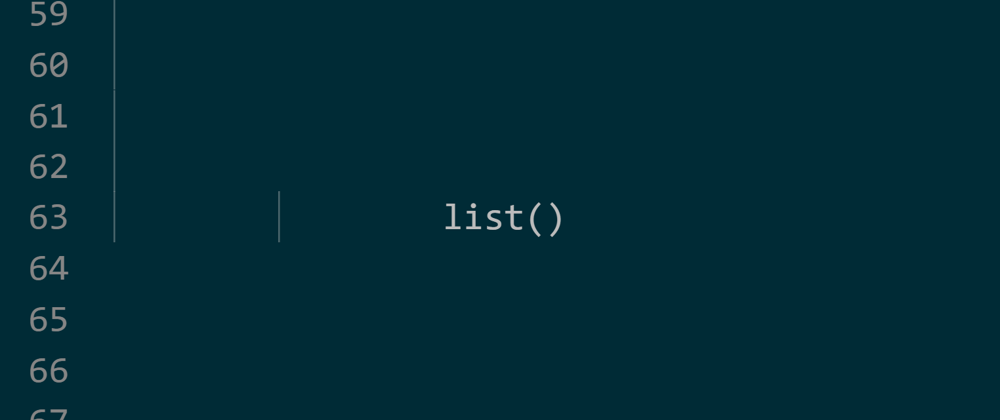Arrays are one of the most fundamental data structures. Python does not have built-in support for arrays, but python lists can be used instead.
Characteristics
Python lists have the following characteristics:
- Lists are ordered. Items in a list have a defined order and the order will not change. Inserted items are placed at the end.
- List items are changeable. Items can be modified, added or removed.
- Lists allow duplicates. It can contain the same value multiple times.
- List items can be accessed using indexes.
Time Complexities For Different List Methods
| Operation | Average Case | Amortized Worst Case |
|---|---|---|
| Copy | O(n) | O(n) |
| Append[1] | O(1) | O(1) |
| Pop last | O(1) | O(1) |
| Pop intermediate[2] | O(n) | O(n) |
| Insert | O(n) | O(n) |
| Get Item | O(1) | O(1) |
| Set Item | O(1) | O(1) |
| Delete Item | O(n) | O(n) |
| Iteration | O(n) | O(n) |
| Get Slice | O(k) | O(k) |
| Del Slice | O(n) | O(n) |
| Set Slice | O(k+n) | O(k+n) |
| Extend[1] | O(k) | O(k) |
| Sort | O(n log n) | O(n log n) |
| Multiply | O(nk) | O(nk) |
| x in s | O(n) | |
| min(s), max(s) | O(n) | |
| Get Length | O(1) | O(1) |
Now let's look at the list methods and how to use them:
append()
This method adds an element at the end of the list.
a = [1, 2, 4, 7]
a.append(8)
print(a)
# Output: [1, 2, 4, 7, 8]
clear()
Removes all the elements from the list.
a = [1, 2, 4, 7]
a.clear()
print(a)
# Output: []
copy()
Returns a copy of the list.
a = [1, 2, 4, 7]
x = a.copy()
print(x)
# Output: [1, 2, 4, 7]
count()
Returns the number of elements with the specified value.
a = [1, 0, 1, 1, 0, 0, 1]
countOnes = a.count(1)
print(countOnes)
# Output: 4
extend()
Add the elements of a list (or any iterable), to the end of the current list. It only takes one argument.
a = [1, 0, 2]
b = ['cat', 'dog', 2]
a.extend(b)
print(a)
# Output: [1, 0, 2, 'cat', 'dog', 2]
index()
Returns the index of the first element with the specified value. If the specified value does not exist in the list, then a ValueError is raised.
a = [1, 0, 2, 'cat', 'dog', 2]
k = a.index('cat')
print(k)
# Output: 3
insert()
This method takes a position and a value and inserts the value at the specified position.
a = [1, 0, 2, 'cat', 'dog', 2]
# Insert 'orange' at the index 1
a.insert(1, 'orange')
print(a)
# Output: [1, 'orange', 0, 2, 'cat', 'dog', 2]
pop()
Removes the element at the specified position. If no argument is passed then the last element is removed from the list and returned.
a = [1, 0, 3, 'cat', 'dog', 2]
x = a.pop()
print(x)
# Output: 2
print(a)
# Output: [1, 0, 3, 'cat', 'dog']
But if an index is passed as argument, then the item at that position is removed and returned.
a = [1, 0, 3, 'cat', 'dog', 2]
x = a.pop(3)
print(x)
# Output: cat
print(a)
# Output: [1, 0, 3, 'dog', 2]
remove()
Removes the first item with the specified value. But if the specified value does not exist in the list then a ValueError is raised.
a = [1, 0, 7, 'cat', 'dog', 7]
a.remove(7)
print(a)
# Output: [1, 0, 'cat', 'dog', 7]
reverse()
This method reverses the order of the list.
a = [1, 0, 7, 'cat', 'dog', 7]
a.reverse()
print(a)
# Output: [7, 'dog', 'cat', 7, 0, 1]
sort()
This method sorts the list. By default the sorting is done in ascending order (small to large).
a = [1, 0, 7, 3, 5, 7]
a.sort()
print(a)
# Output: [0, 1, 3, 5, 7, 7]
The sort() method can accept two arguments reverse and key.
The reverse argument can be True or False.
reverse=True will sort the list in descending order. (large to small)
a = [1, 0, 7, 3, 5, 7]
a.sort(reverse=True)
print(a)
# Output: [7, 7, 5, 3, 1, 0]
The key argument however, accepts a function. For example, if I have a list of strings and I want to sort them according to their lengths, I can do the following:
a = ['cat', 'mouse', 'hare', 'elephant']
a.sort(key=len)
print(a)
# Output: ['cat', 'hare', 'mouse', 'elephant']
However, the next example is more interesting and can help us in a lot of scenarios.
Suppose you have a list of dictionaries. The dictionaries each contain the name and age of a person. You want to sort the dictionaries according to the age values. You can do this:
# This function returns the age value
def myFunc(d):
return d['age']
a = [
{'name':'Abu Hurayra', 'age': 23},
{'name':'Obayed', 'age': 27},
{'name':'Shariful Islam', 'age': 25},
{'name':'Khairul Islam', 'age': 14}
]
a.sort(key=myFunc)
print(a)
# Output: [
# {'name': 'Khairul Islam', 'age': 14},
# {'name': 'Abu Hurayra', 'age': 23},
# {'name': 'Shariful Islam', 'age': 25},
# {'name': 'Obayed', 'age': 27}
# ]
References:







Top comments (0)